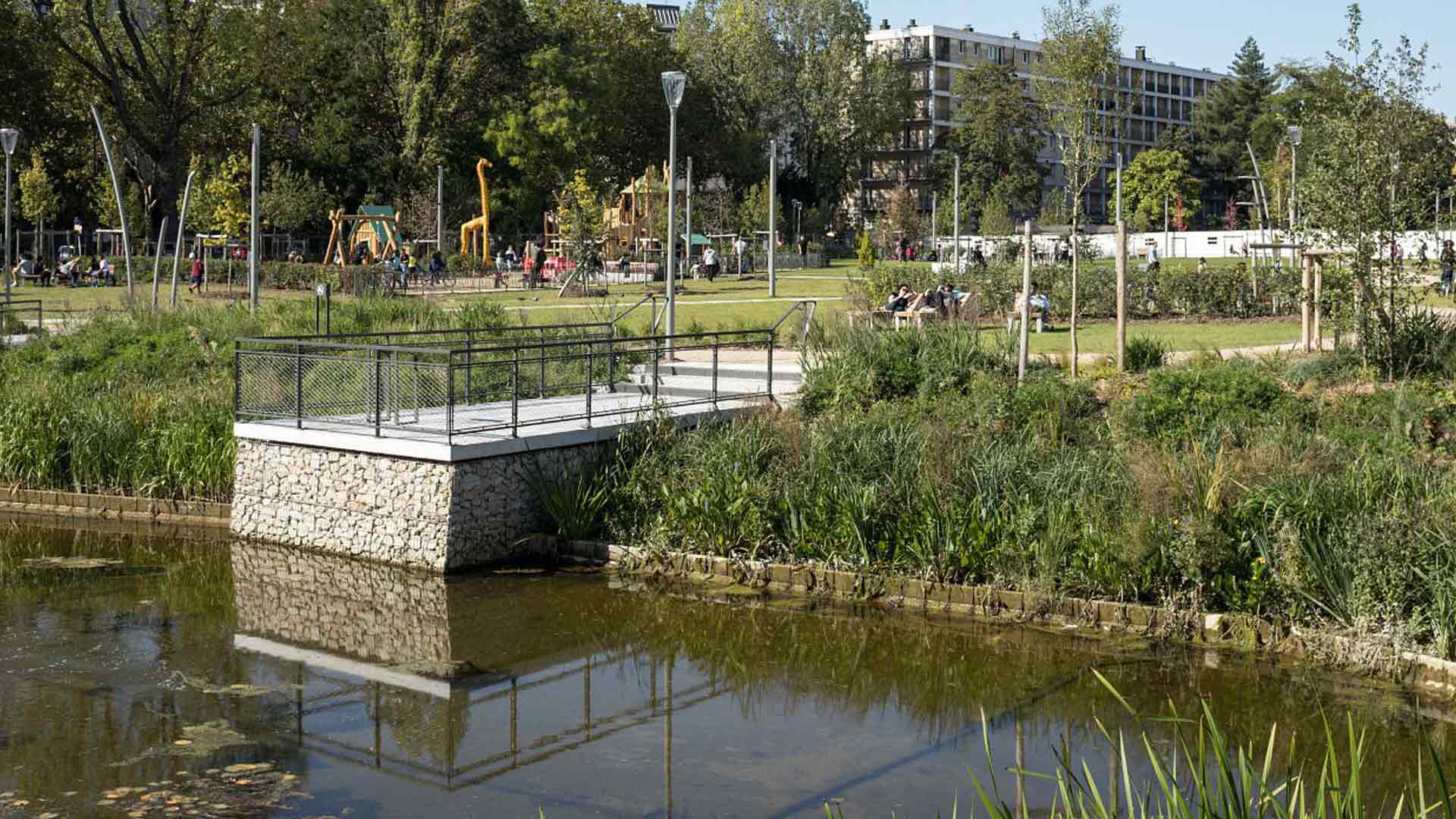
This project is at the gateway to the 20th arrondissement of Paris, next to Bagnolet, and will be centered around a 3-ha park. The goal is to provide a diversity of uses, encourage economic development and infrastructure that will promote social diversity and create better living conditions for local residents.
A pioneering district in terms of sustainable development
Python-Duvernois was recently awarded the BBCA (low-carbon construction) label and is exemplary in terms of low-carbon initiatives and the circular economy.
All these new buildings are designed to be low-carbon, with ambitious goals in terms of certification and extensive use of bio-sourced materials. At the same time, a large number of existing housing units will be refurbished, therefore limiting the environmental impact of new construction and demolition.
Finally, the public spaces are designed to encourage active mobility and minimize the use of cars, therefore creating a healthy and sustainable living environment.
Energy, a key issue
The whole project implements a strategy of sobriety.
The housing developments will be in line with goals set in accordance with the 2025 or 2028 thresholds of the RE2020 environmental regulation. This energy-efficiency goal will be combined with efforts to ensure the comfort of users.
The district heating networks will also be extended with the construction of a relay station to provide sustainable heat to the Python-Duvernois projects, and also to other nearby housing and public facilities.
A project focused on its future users and their comfort
The urban development project will be centered around a 3-ha landscaped park with sports and recreational facilities. This area of greenery will be lined with housing units and will become a reservoir for biodiversity and a refreshing oasis for local residents.
Hygrothermal comfort will also be optimized by offering housing that faces different directions and dual-aspect housing, ensuring comfortable temperatures all year round.
Python-Duvernois aims to be exemplary on issues related to the environmental transition. Thanks to an integrated approach that combines energy-efficiency, low-carbon materials and active transport solutions, the goal of this project is to minimize the carbon footprint while creating an improved, quality living environment for local residents and users.
© SEMAPA - Candito Stefano

